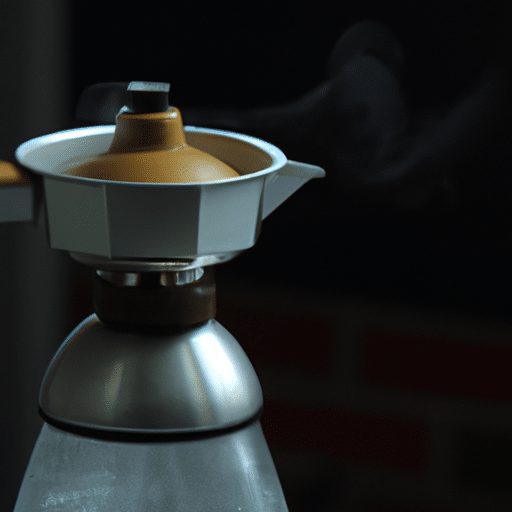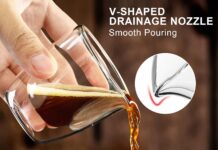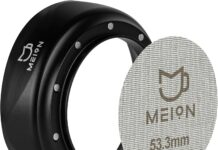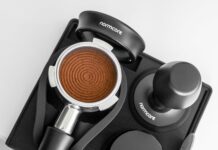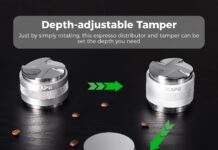Percolator coffee, the classic brewing method that never goes out of style. Whether it’s the nostalgic memories it evokes or the rich, bold flavor it produces, percolator coffee has stood the test of time. From the gentle bubbling sounds to the aromatic scent that fills the air, every sip of percolator coffee is a journey back in time. In this article, we explore the origins of percolator coffee, how it works, and why it continues to be a beloved brewing technique. Get ready to embark on a delicious adventure through the world of percolator coffee.
History of the Percolator
Invention of the percolator
The percolator, a classic brewing method for coffee, has a rich history dating back to the 19th century. It was invented by a Frenchman named Jean-Baptiste de Belloy in 1806. Initially, the percolator was designed as a pot with a built-in filter basket and a tube that extended from the bottom to the top of the pot. Coffee grounds were placed in the filter basket, and water was poured into the pot. As the water heated up, it would rise up the tube and percolate through the coffee grounds, creating a bold and aromatic brew.
Popularity in the early 20th century
The percolator gained immense popularity in the early 20th century, particularly in the United States. Its invention coincided with the rise of mass production and industrialization, making percolators easily accessible to households across the nation. During this time, it became a staple in many American kitchens, serving as a reliable and convenient method for brewing coffee.
Decline in popularity
However, as time went on, the percolator faced a decline in popularity due to the emergence of other brewing methods. The introduction of automatic drip coffee makers in the 1970s revolutionized the way people brewed their coffee. These new devices offered convenience and consistency that the percolator couldn’t match. As a result, percolators gradually became less common in households, overshadowed by the modern coffee-making technologies of today.
How Does a Percolator Work?
Introduction to percolator mechanics
The mechanics of a percolator are relatively simple yet fascinating. The percolator consists of a water chamber at the bottom, a vertical tube leading to the top, and a filter basket placed in the middle. When heat is applied to the percolator, the water in the chamber starts to boil.
The boiling and percolating process
As the water boils, steam and hot water vapor rise up the vertical tube, creating pressure. This pressure forces the hot water to splash onto the coffee grounds in the filter basket. The water then seeps through the grounds, extracting the flavors and oils, and percolates back down into the water chamber.
Understanding the percolation ratio
The percolation ratio refers to the amount of water used in relation to the coffee grounds. Achieving the right ratio is crucial to ensure a well-balanced and flavorful brew. Most percolators recommend using two tablespoons of coffee grounds for every six ounces of water. However, this ratio can be adjusted to personal preferences, allowing for stronger or milder cups of coffee.
Advantages of the Percolator
Strong and robust flavor
One of the significant advantages of using a percolator is the rich and bold flavor it produces. The percolation process allows water to continuously cycle through the coffee grounds, resulting in a full-bodied and assertive cup of coffee. This strong flavor profile is especially appreciated by those who enjoy a robust caffeine kick in the morning.
Ability to brew large quantities
Another notable advantage of the percolator is its ability to brew large quantities of coffee. This makes it an ideal choice for social gatherings, family brunches, or office settings where a higher volume of coffee is needed. With a percolator, you can easily satisfy the caffeine cravings of a large group without having to brew multiple batches.
Durability and long lifespan
Percolators are renowned for their durability and long lifespan. Made primarily from stainless steel or aluminum, they are designed to withstand high temperatures and frequent use. Unlike other coffee brewing methods that may require regular maintenance or replacement, a well-maintained percolator can last for many years, making it a cost-effective investment.
Portability for outdoor use
The portability of the percolator is a significant advantage for those who enjoy their coffee on the go. Whether you’re camping, hiking, or simply spending time in nature, percolators are excellent companions for outdoor adventures. Their compact size and ability to function over open flames or portable stoves make them a convenient option for brewing coffee in remote locations.
Disadvantages of the Percolator
Potential for over-extraction
One of the challenges with using a percolator is the potential for over-extraction. The continuous cycling of water through the coffee grounds can lead to bitter and over-extracted flavors if the brewing time is not carefully monitored. It is essential to keep a close eye on the percolation process, especially if you prefer a milder or more balanced cup of coffee.
Difficulty in controlling brew strength
Unlike other brewing methods that allow for precise control over brew strength, percolators can be less forgiving in this aspect. The strength of the coffee can vary depending on the percolation time and the amount of coffee grounds used. Finding the perfect balance can take some trial and error, requiring a bit of experimentation to achieve the desired brew strength.
Risk of bitterness
The extended brewing time in a percolator can increase the risk of bitterness in the final cup of coffee. As the water continuously cycles through the coffee grounds, it has more time to extract undesirable compounds, resulting in a bitter taste. However, this can be mitigated by adjusting the brewing time and being mindful of the overall extraction process.
Inconsistent brewing temperature
Percolators don’t provide precise temperature control during the brewing process, which can affect the final taste of the coffee. The water temperature can vary throughout the percolation cycle, resulting in a less consistent brew. While this may not be a significant concern for many coffee enthusiasts, those seeking precise temperature control may prefer alternative brewing methods.
Choosing the Right Percolator
Stovetop percolators
Stovetop percolators are the traditional and iconic version of this brewing method. They are designed for use on a stovetop burner, making them a classic choice for coffee lovers who enjoy a hands-on brewing experience. Stovetop percolators come in various sizes, typically ranging from six to twelve cups, allowing for versatility in serving large or small groups.
Electric percolators
Electric percolators have gained popularity in recent years due to their convenience and ease of use. These automatic percolators feature a heating element that eliminates the need for a stovetop burner. They often come with built-in timers and indicators to help control the brewing process. Electric percolators are available in different sizes and are an excellent choice for those seeking a hassle-free brewing experience.
Size and capacity considerations
When choosing a percolator, it is important to consider the size and capacity that best suits your needs. If you often entertain guests or have a large household, opt for a larger percolator that can accommodate a higher volume of coffee. On the other hand, if you primarily brew coffee for yourself, a smaller-sized percolator may be more practical.
Material options
Percolators are typically made of either stainless steel or aluminum, each offering its own benefits. Stainless steel percolators are known for their durability, longevity, and resistance to rust or corrosion. Aluminum percolators, on the other hand, are lightweight, heat up quickly, and are often more affordable. Consider your priorities regarding durability, heat conductivity, and budget when choosing the material for your percolator.
Grinding Coffee for a Percolator
Coarseness level for percolator brewing
Grinding coffee to the appropriate coarseness level is essential for percolator brewing. Unlike other brewing methods that require a finer grind, percolators require a coarser grind size to prevent over-extraction. A medium to coarse grind will allow for better water flow and reduce the risk of bitter flavors.
Achieving uniformity in grind size
To ensure a consistent and even extraction, it is crucial to achieve uniformity in the grind size of your coffee grounds. Inconsistent grind sizes can result in uneven extraction, leading to an imbalanced flavor profile. Invest in a reliable burr grinder, which provides better control over the grind size and ensures a more uniform particle distribution.
Avoiding fine grounds
When grinding coffee for a percolator, it is important to avoid producing any fine grounds. Fine grounds can easily pass through the filter basket and mix with the brewed coffee, leading to a gritty texture or even sediment in the cup. To prevent this, be mindful of the grinding process and remove any fine particles that may have accumulated.
Brewing with a Percolator
Preparing the percolator
Before brewing, it is essential to properly prepare your percolator. Start by disassembling the different components, including the filter basket, stem, and percolator tube. Clean all parts thoroughly, ensuring there are no lingering residues or flavors from previous brews. Reassemble the percolator, ensuring a secure fit for a smooth brewing experience.
Water-to-coffee ratio
To achieve the desired brew strength, it is important to get the water-to-coffee ratio right. As a general guideline, use two tablespoons of coffee grounds for every six ounces of water. However, you can adjust this ratio to your personal preferences, increasing or decreasing the coffee grounds for a stronger or milder cup of coffee.
Setting the brewing time
The brewing time is a crucial factor in determining the flavor profile of your coffee. For a milder cup, aim for a shorter brewing time, while a longer brewing time will result in a richer, more robust flavor. As a starting point, around five to seven minutes is often recommended, but feel free to experiment and find the brewing time that suits your taste.
Steps for stovetop brewing
When using a stovetop percolator, start by filling the water chamber with cold water. Place the filter basket with coffee grounds on top, ensuring it is securely in position. Assemble the remaining components of the percolator and place it on the stovetop burner. Heat on medium heat until the water reaches a gentle boil, and then reduce the heat to simmer for the desired brewing time.
Steps for electric brewing
Electric percolators simplify the brewing process by providing automatic controls. Begin by filling the percolator’s water chamber with cold water and placing the filter basket with coffee grounds on top. Set the desired brewing time and turn on the percolator. The machine will handle the heating and percolation process automatically, notifying you when the coffee is ready to enjoy.
Tips for a Great Percolator Brew
Using freshly roasted coffee beans
To enhance the flavor of your percolator coffee, opt for freshly roasted coffee beans. Coffee beans are at their peak flavor within a few weeks of roasting, and using them within this time frame will result in a more vibrant and enjoyable cup of coffee. Seek out local roasters or specialty coffee shops that offer freshly roasted beans for the best results.
Experimenting with different coffee types
Percolators are versatile brewing devices that can accommodate various coffee types. Whether you prefer a dark roast, a medium roast, or even flavored coffees, the percolator can extract the flavors and nuances of each type. Experiment with different coffee beans and blends to discover new taste experiences and find your personal favorites.
Avoiding over-extraction by monitoring brew time
As mentioned earlier, over-extraction is a common challenge with percolators. To avoid this, closely monitor the brewing time and remove the percolator from heat when the desired brew strength is achieved. This will help prevent the coffee from becoming overly bitter or acquiring unwanted flavors that come from excessive extraction.
Preheating the water
Preheating the water in your percolator can contribute to a more consistent brewing temperature. Start by pouring hot water from the tap into the water chamber before brewing. This will help reduce the time it takes for the water to come to a boil and maintain a more stable temperature throughout the brewing process.
Cleaning and Maintenance
Cleaning the percolator after each use
Proper cleaning and maintenance are essential to keep your percolator functioning well and producing delicious coffee. After each use, disassemble the percolator and rinse all the components with warm water. Use a mild detergent to wash away any oils or residues that may have accumulated. Finally, thoroughly dry all parts before reassembling or storing.
Descaling and removing mineral deposits
Over time, mineral deposits may accumulate in your percolator, affecting the taste and performance of the machine. To remove these deposits, fill the water chamber with equal parts vinegar and water. Run a complete percolation cycle, allowing the mixture to circulate through the percolator. Rinse the percolator thoroughly with clean water to remove any remaining vinegar taste.
Proper storage and maintenance
To prolong the lifespan of your percolator, it is crucial to store it properly and perform regular maintenance. Ensure that all parts are completely dry before storing to prevent any moisture-related issues. Periodically check the filter basket, stem, and percolator tube for any signs of wear or damage, and replace them if necessary. Following these steps will help you enjoy your percolator for years to come.
Percolator Coffee vs. Other Brewing Methods
Comparison to drip coffee makers
Drip coffee makers have gained widespread popularity due to their convenience and ease of use. They offer precise temperature control, consistent brewing, and the ability to program coffee brewing in advance. However, percolators provide a much stronger and robust flavor profile that many coffee enthusiasts appreciate. They also have the advantage of being able to brew larger quantities, making them a better choice for social gatherings or coffee-loving families.
Contrasting with French press
French press brewing is known for producing a rich and full-bodied cup of coffee with a distinct mouthfeel. While the percolator and French press share similarities in terms of strength and flavor, there are notable differences in the brewing process. The percolator continuously cycles hot water through the coffee grounds, resulting in a more intense extraction. On the other hand, the French press relies on immersing the coffee grounds in hot water and requires a coarser grind size.
Differentiating from espresso machines
Espresso machines are highly specialized and specifically designed for brewing concentrated shots of coffee. While percolators and espresso machines both produce strong and bold coffee, their brewing methods and end results are vastly different. Percolators extract coffee through cycling water and steam, while espresso machines use pressure to force water through finely ground coffee at a rapid rate. The percolator offers a simpler and less expensive alternative for those seeking a strong coffee experience without the complexity of an espresso machine.
In conclusion, the percolator is a classic brewing method with a rich history and unique brewing process. It offers advantages such as a strong flavor, the ability to brew large quantities, durability, and portability. However, it also has disadvantages such as the potential for over-extraction, difficulty in controlling brew strength, the risk of bitterness, and inconsistent brewing temperature. When choosing a percolator, factors such as stovetop or electric, size and capacity, and material should be considered. Proper grinding, brewing, and maintenance techniques are essential to achieving the best results with a percolator. Percolator coffee can be further enhanced by using freshly roasted coffee beans, experimenting with different coffee types, monitoring brew time, and preheating the water. Cleaning and maintenance are crucial for the longevity of the percolator, and percolator coffee can be compared to other brewing methods such as drip coffee makers, French press, and espresso machines. Overall, the percolator remains a cherished brewing method, offering a robust and flavorful cup of coffee for those who appreciate its classic charm.


